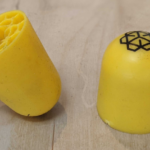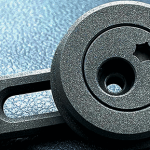- Home
- 3D Printing
- Unpicking the jargon around additive manufacturing, rapid prototyping and 3D printing
Unpicking the jargon around additive manufacturing, rapid prototyping and 3D printing
Article reproduced courtesy of PRW News:
What’s the difference?
Justin Pringle unpicks the jargon around additive manufacturing, rapid prototyping and 3D printing
As a prototyping bureau, we are asked many times each week what the difference is between the terms additive manufacturing, rapid prototyping and 3D printing.
Essentially, while they do have different meanings, it is true to say that additive manufacturing, rapid prototyping and 3D printing are all basically the same thing.
Put another way, the definition of each of these lies in the application of the underlying technology – and that’s 3D printing. Let’s try and explain this by diving straight into some definitions. First, 3D printing – a popular but by no means new collective term for a range of technologies that are used in additive manufacturing and rapid prototyping.
The technologies include stereolithography (SLA), which has been around and in use since the 1980’s when it was invented by 3D.
Also under the heading of 3D printing technology are selective laser sintering (SLS), fused definition modelling (FDM) and DLP.
One factor binds all these technologies together: the technique involves multiple layers of material being progressively ‘added’ and then ‘hardened’ or ‘cured’ to build or ‘print’ the part.
Additive manufacturing and rapid prototyping are simply two terms for 3D printing.
What’s brought 3D printing to the fore in recent years is the increased media attention that has come about with reduced price points on 3D printers including desktop 3D printing machines, bringing them within reach of the hobby and general interest consumer market.
The comparatively low cost of these new consumer hobbyist 3D printers has given rise to a new interest in 3D printing, and the advent of volume 3D printing houses that can produce small components in volume on multiple machines.
And this is where additive manufacturing comes in. Additive manufacturing is 3D printing of parts, components and products as part of the production manufacturing process. The key opportunity is that 3D printing does have cost and versatility benefits over conventional manufacturing, particularly where the alternative is expensive bespoke tooling.
The main limitation with additive manufacturing is with volume. It is not easy to manufacture large quantities of parts in an effective timescale without large numbers of 3D printing machines. Even then, the desired levels of quality and finish may not always be possible.
Finally we come to rapid prototyping. Again this isn’t a new term, but was the generally accepted term for ‘prototyping using 3D printing’ until the new wave of interest in 3D printing developed.
Clearly, prototyping has many uses and applications – from first concept realisation and presentation to full mechanical and functional testing.
Each of the 3D printing technologies available as part of the prototyping process has its individual strengths – and is capable due to the process and the materials available of producing parts with different mechanical properties, geometric detail and finish.
And this is where the possibilities really start to open up. Among the people that know how to match capabilities with real requirements are the long established, experienced prototyping bureaus.
They tend to offer not just 3D printing services, but also other prototyping and manufacturing technologies such as vacuum casting and CNC milling and CNC turning as options for producing prototype and additive manufacturing parts.
Design engineers should always feel able to consult their prototyping bureau about material or technology choice to achieve the results needed.
With so many possibilities – and so much terminology – it’s best to seek advice as early as possible in the process.
Can we help?
Contact us on 01763 249760 or click here to request a quote.





